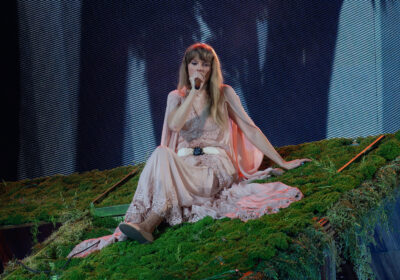A year on Mars, sort of

Hawaii Space Exploration Analog and Simulation built a habitat on the side of the Mauna Loa volcano to house the crew for their 12-month stay. SPECIAL TO THE ORACLE/HI-SEAS
Red soil and an empty landscape were the views offered to the six-member crew inside the Hawaii Space Exploration Analog and Simulation (HI-SEAS) habitat during their yearlong stay inside of the little dome.
It was the surface of Mars — well, an Earth-bound equivalent.
Located 8,000 feet above sea level on the barren side of the active volcano Mauna Loa in Hawaii, the multilevel, approximately 1,000-square-foot habitat was the home of the first yearlong Mars simulation mission conducted by the research team of HI-SEAS, according to the HI-SEAS website.
Last week, the crew emerged from the habitat. They had a media event and a night’s rest before they began their debriefing with another member of the HI-SEAS research team, USF professor of psychology Wendy Bedwell. The HI-SEAS project is part of a research grant from NASA.
Her role in the research is focused on collecting data from debriefs that will then be analyzed to study the fluctuations in team cohesion throughout the mission’s duration. HI-SEAS has previously conducted eight-month missions. This past week, she was in Hawaii conducting the debriefs.
“The goal is to gather data on the eight-month crew and the 12-month crew and compare them to see how the fluctuations and cohesion are similar or different among the two crews over time and then,” she said.
“If those patterns that we see continue in those extra four months, or if there’s kind of new patterns that emerge, and if we see new patterns, then that will be indicative of the fact that … the longer the duration of the mission, the more we’re learning about how cohesion operates within a crew.”
This research is important, she said, because it is collecting data on team cohesion in a very specific, isolated context that could change current perceptions on proper team composition and training. It could also help NASA in the development of a manned mission to the real red planet.
The debriefing process involved interviews with members of the crew, which are recorded. The debriefs usually last for an average of 3 1/2 hours and are composed of open-ended questions, some dealing with job delegation during the mission and others focusing more on interpersonal interactions.
She also had data from debriefs the crew gave after simulated space walks and other team activities.
“So I can kind of look at how they were interacting with one another and see how that changed throughout the duration of the mission,” Bedwell said.
The reliance on technology for the data collection presented some problems, as technology can be unreliable and the crew had to manage their power usage in the confines of the habitat.
According to Bedwell, creating the simulation environment and crafting a crew were also challenging. The crewmembers had to meet requirements correlating with those for NASA astronauts, including an educational level of at least a master’s degree. The crew is also designed to be diverse.
Challenges aside, Bedwell said the research has been rewarding.
“The opportunity to do this type of research is really amazing for me,” she said. “The whole reason that I became a psychologist in the first place is because I wanted to do research that had impact, and I feel like this research is really impactful.”
The astronauts also had to give up a year of their lives and live in the habitat.
Bedwell was required, along with the other researchers, to spend one night in the habitat along with seven of her colleagues. She said she didn’t take too much of a liking to life in the dome, as she is a very outdoorsy person.
“That was plenty of time in the dome for me,” she said. “I like studying this but I would never volunteer to be one of the participants.”






